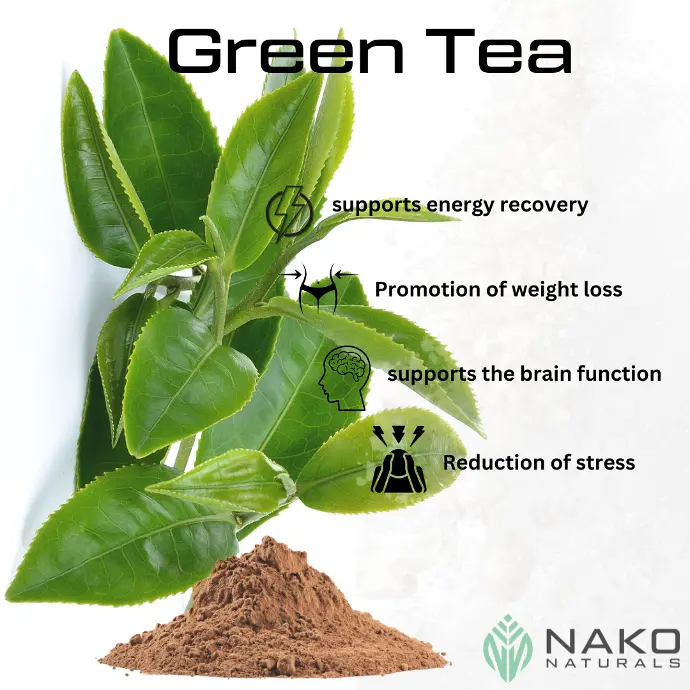Product catalogue
Did you know?
NAKO NATURALS collaborates directly with farmers to implement advanced practices that enhance sustainability and cleanliness in cultivation, production, and distribution processes.
Green Tea Extract 40% Polyphenol
| Botanical Name: | Cameilia sinensis O. Ktze |
|---|---|
| Appearance: | powder |
| Plant Part Used: | leaves |
| Raw Material Used: | cultivated |
| Extraction Solvent: | Water |
| Extract Ratio: | 6-8:1 |
| Active Ingredient | Assay in % |
|---|---|
| Total Polyphenols | 40.0 |
| If the specification does not meet your requirement, please contact us for a tailor made one. |
40% Polyphenol
Origin: China
Historical Background & Origin
Green tea, scientifically known as Camellia Sinensis var. sinensis, has been revered for its medicinal properties for nearly five millennia.
Its historical roots can be traced back to China, although Japan has also established itself as a prominent producer of this particular tea variety. The majority of the global demand for green tea originates from China and Japan, with Taiwan and Sri Lanka also playing significant roles in its production. The Camellia Sinensis plant has been cultivated and utilized for thousands of years in these regions, with the Chinese being the first to recognize its invigorating and health-enhancing qualities. Buddhist monks historically utilized green tea for medicinal purposes, particularly for detoxification.
Bioactive Compounds
Green tea is derived from unfermented tea leaves.
Regarded as one of the healthiest beverages available, green tea is devoid of sugar and calories, while being abundant in antioxidants that confer numerous health benefits.
Comprising approximately 30% polyphenols, green tea contains substantial levels of catechins, notably epigallocatechin gallate (EGCG). Catechins are natural antioxidants that aid in preventing cellular damage and offer a wide array of health advantages. EGCG, in particular, is a key compound in green tea that has been extensively researched for its potential in treating various ailments, contributing significantly to the tea's potent medicinal properties.
Green Tea
Green tea boasts a variety of bioactive compounds, including caffeine, other alkaloids, polyphenols, and vitamin K, with many of these compounds transferring into the final beverage upon steeping the tea leaves.
The primary stimulants found in green tea are caffeine, theobromine, and theophylline. Conversely, L-theanine, an amino acid present in green tea, exerts a calming influence on the nervous system. Consequently, green tea can elicit a mildly stimulating and simultaneously relaxing effect.
Health Benefits
- Enhances cognitive function
- Facilitates fat metabolism
- Mitigates cancer risk
- Lowers the likelihood of Alzheimer's disease


